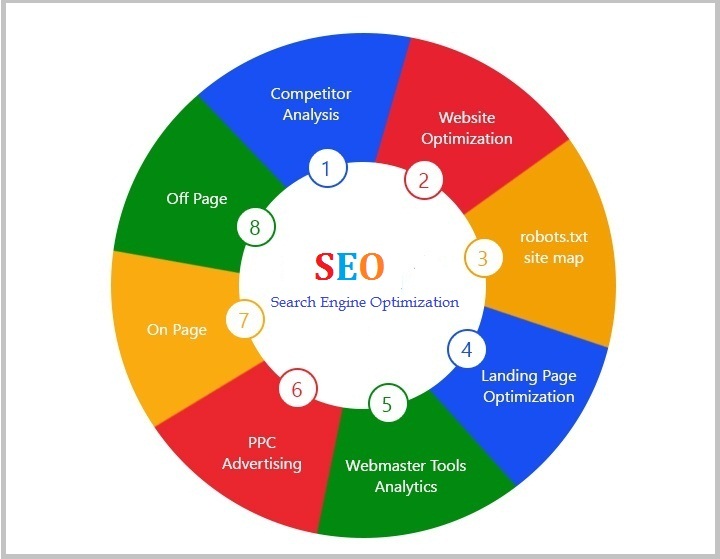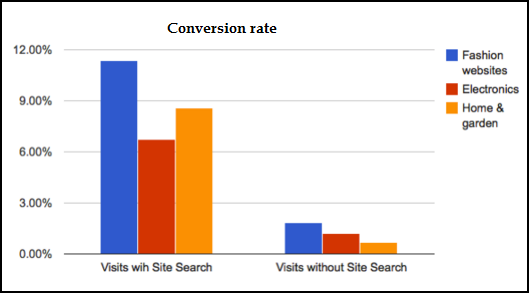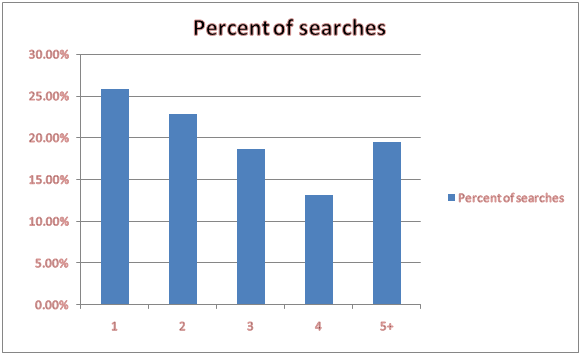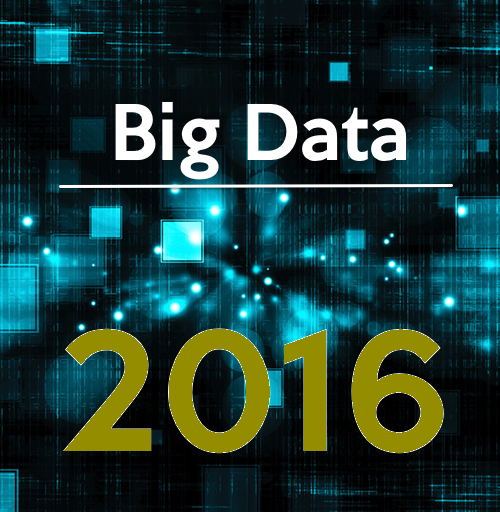


Search has become integrated into the fabric of our society. With more than 197.9 billion searches performed worldwide each year since April 2014, more or less 6.6 billion web searches will be performed every day. That means on an average about 7,500 searches are performed every single second of a day. Moreover; users have grown to wait for that the responses to their search queries will be returned in less than one second.
If you have ever come across, the various “SEO is dead”, that claims to make the rounds play periodically in the digital marketing world, rest assured — SEO is both alive and well — and has not as many feared and been killed by social media marketing as a driver of web traffic. However, in November 2014, Twitter announced that by renewing its focus on SEO, it has increased the numbers of visitors coming to the site tenfold — from 7.5 million to 76 million visitors in a month.

The demand for search continues to be high; because of the people can now obtain in mere seconds information that 20 years ago would have required planning a trip to the nearest library, the usage of card catalog and the Dewey Decimal system and a physical search through halls of printed volumes — a process that could easily have consumed two hours or more. Through the new channel of search, people can now conduct many of their favorite searches, shopping, banking and personal transactions online—somewhat the things have changed the way our global population lives, interacts, and connects to each other.
The dramatic shift in behavior represents what the investors are likely to label a disruptive event – an event that has changed something in a fundamental way. Search Engines have been always the center of this disruptive event, and having businesses on website con-tent appears highly in the search engines when people try to look for the service, product or for any resource that business provides is critical to its survival. This is the situation for every business now and then; as most of the paths to success, obtaining such prime search results in real estate is not a simple matter. However, this is how the search engine optimization works in promoting your business.
The Mission of SEO

Web searches are free to use and yet very informative; as there are many available search engines to find what they are seeking, so the burden is on the search engines to develop a related, fast and fresh search experience. Most of the part search engines achieve this by being professed as having the most relevant results and delivering them the fastest, the users will search thinking that they will get them to what they are looking in for and want it in the least amount of time.
As a result, search engines invest an incredible amount of energy, time and capital in improving their significance. Thus, this includes performing wide studies of user responses to their searches, comparing their search results against those of other search engines, and conducting eye-tracking through a click- rate studies and constructing PR and other marketing campaigns.
How will SEO help businesses to Grow?
The recent survey says that the digital market and marketing through search engines is adequately grown as never compared. The basic marketing strategy is always helpful for many businesses to grow, but is it that enough or do they still need to spend more time on marketing strategy is the big question in many organizations, companies or businesses.
Here is the answer— you can generate good revenue primarily with the help of Search engines through paid advertising; though the majority of this revenue will come from pay-per-use or cost-per-click models, in which the advertisers pay only for users who click on their ads. As we know that the search engines’ success depends on the relevance of their search results, manipulations in search engine rankings result in non-relevant results, and these type of results are generally referred to as spam, and should be dealt very seriously. Each major search engine employs a team who focuses solely on the result or eliminating the spam from their search results; this is generally referred as “web spam” teams. However, this matters to SEO professionals as they use more tactics to promote the products or service, and they should not land the spam by the search engines, as this would carry more risk of incurring penalties for the websites they work on.
The Human Goals of Searching
When we need some sort of information, or to know something it all depends on upon your search. The basic goal of any human search is to obtain the information relevant to a specific set of keywords or phrases you enter into the search field; which is also known as a query. A searcher may invent the query as a question, but the majority of searches are performed by simply entering word combinations, and leaving the search engines to do their work of determining the “objective.” One of the most important essentials to build an SEO strategy for a website is developing a thorough understanding of your targeted audience, and how they use combined words and concepts to obtain information about the services or products you provide. Once you know how an average searcher or more specifically your target market utilizes query-based search engines, you can more efficiently reach or retain those users.
Search engine usage has increased over the years; however, the major principle of conducting a search remains largely unchanged. Let us understand the following steps most of the search engine consists:

When this process results in the acceptable completion of a task, you can create a positive experience for the user by the search engine, and the site providing the information or the result.
We learn more on Digital Marketing strategies and how to determine Searchers Intent and the challenges for Search Marketers and Search Engines in our next blog.
...
Read More

When your customers value your business propositions, what should be the next is the question to be asked to every business entrepreneur today. As per the recent survey, 80% of you do, but only 8% of your customers actually come back to you and agree that you provide superior value.
Now it’s not going to help you out as it is a sad state of affairs, for you and for your customers too. It’s self-evident that great customer satisfaction drives customers loyalty as well a wish to repeat your business levels to more or to next stage; this will, in turn, help you to grow fast and more generously with expected revenues. Best example: When you follow up on your sales leads and identified by your loyalty surveys that your revenue increases of more than you expected.
Since we know that everyone today is more cautious about keeping their date safe, collecting it, or using it to improve and maintain their customer relationship for as long as they can. But, back then there are still constraints on server and storage capacity, which leads to lack of high-scale software tools, limited companies’ ability to understand their customers.
Today, all that has changed, using the resources are available in the cloud, but how far, as you know that virtually unlimited amounts of cheap storage, complicated analytics, and gadget learning, to name a few is possible now to gain of detailed and actionable insights as never before; and you can truly know our customers.
Take an example: A famous sports franchise captures every interaction the championship team has with its fans from the website to online merchandising to mark on social feeds and grabs more attention towards its brands.

If you want to implement such advanced techniques to your business growth then there are tools available in the market such as Dynamics Online, Dynamics Marketing, Microsoft Office 365 and Power BI for Data Visualization.
Many businesses do not use application analytics for improving their customer relationships. According to Forrester, it’s more likely to use analytics first and foremost to monitor and improve the performance of your applications. That’s a good thing to do- but if performance is all you need to monitor, as you are leaving your money on the table; make sure that your priorities in digital marketing must include by improving your customer engagement, your customers wants, which makes you too easy the work and measure convenience, personalization and trust.
Successful companies including your competitors are increasingly aware that they are all inevitably becoming software and analytics companies. All the data is in use or the data they collect from their customers can be analyzed to maximize your relationship and of course your profits. That means that software which is not ready must become a core competency for your company.
MARC ANDREESSEN famously remarked as venture capitalist a few years ago marked — Software, is “eating the world.”
...
Read More

The value proposition of Cloud computing — the delivery model for digitalization and innovation has evolved from cost reduction and scalability to mobility and cognitive computing. However, the other benefit is a path to improve customer loyalty using cognitive services through a cloud to create personalized promotions and interactive customer support.
This thinking has extended the idea of a cloud assessment beyond traditional and advanced IT analytics that aimed to improve the customer experience and expectations. The purpose of this customer-centric approach is not which cloud is the best fit for any application; instead, it should, which cloud is the most innovative in adding to hosting services.
The cloud suitability assessment in traditional approach is to evaluate the IT systems using prearranged criteria and to identify the best suitable cloud hosting environment. By implementing such environment you can evaluate cost reduction, agility, scalability, and flexibility. However, such assessments often result in creating a hybrid cloud (private and public) for enterprise-level customers.

While based on every organization’s IT need and policies, it is crucial to tailor assessment criteria which are typically included on latency (performance), accessibility, hardware dependency, data security/privacy and demand certainty. Thus, the end result is to migrate your application to the cloud, but that is not enough to be competitive in many markets today.
However, these assessments are like foundations to new analysis which aims to transform traditional IT systems into cloud-based systems to enhance the customer based services.
This new cloud assessment requires added evaluation criteria’s, such as cross-platform compatibility, integration involvedness, open technologies, and cognitive computing applicabilitys. These criteria’s can overlap with architectural design principles, and enable innovative services through IT systems running in the cloud.
Here are some questions that may help you to make out any gaps and achieve your innovative goals that go beyond legacy cloud migration.
This comprehensive assessment will make your systems or applications land in a cognitive ready cloud environment so you can speed up the design and implementation phase to innovative services.
The potential for these services is every time unlimited, so you need to consider the new insights made possible by cognitive computing. With the help of cognitive services process, you can see the tremendous amount of structured and unstructured data generated by billions of mobile devices every day.
It’s time to go beyond migrating your applications and systems into the cloud, and also look into its readiness for innovations how cloud and cognitive services could revolutionize your customer experiences. By doing so you could drive your digital transformation.
...
Read More

According to Wikipedia, professional learning network role can include, “searcher, assemblator, designer of data, innovator of subject matter, and researcher”.
Professional learning Network is a powerful change agent. And in today’s world an online professional learning network is indispensable. Technology allows easy access to an unparalleled network of professional resources. Growing your network can lead to opportunities for professional growth and help change the future of education.
...
Read More

Big or small, companies today are finding different ways to capture and use more data. Almost everyone agrees to this that Big Data has taken the business world by storm. But what’s next? What are the technologies which will develop around it?
Or Will data continue to grow; and can it become a relic as quickly as the next trend — Cognitive Technology? Fast Data? - appears on the prospect. Let’s look at some of the predictions from the foremost experts in the field, and how likely they are to come to pass and see how the push to make big data more mainstream and stronger in 2016.

 \
\
Time will only tell which of these predictions will come to real pass and which will merely pass into darkness. But the important takeaway will be all about Big data that is only going to get bigger and every business for and into data and for those companies that ignore it will be left further and further behind.
...
Read More